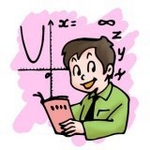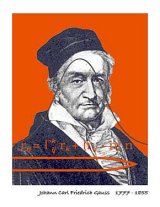
Worksheets and No Prep Teaching Resources
Reading Comprehension Worksheets
History of Mathematics

History of Mathematics
 Worksheets and No Prep Teaching Resources Reading Comprehension Worksheets History of Mathematics |
 History of Mathematics |
| edHelper's suggested reading level: | grades 9 to 12 | |
| Flesch-Kincaid grade level: | 10.73 |
|
The Age of Discovery - Gravity and Gauss
By Colleen Messina |

|
 1 By the seventeenth century, mathematics had come a long way from the tallies and abacuses of the ancient world. Mathematicians had finally adopted the new Arabic numbers, as well as the symbols for addition, subtraction, multiplication, and division. Logarithms made difficult problems much easier, and calculus opened up new possibilities in science. Mathematicians applied these new tools in exciting ways ranging from world exploration to astronomy. Ships crisscrossed the oceans to new places, and telescopes scanned the skies and discovered the elliptical orbits of planets. The understanding of gravity revolutionized military science. It was truly an age of discovery.
1 By the seventeenth century, mathematics had come a long way from the tallies and abacuses of the ancient world. Mathematicians had finally adopted the new Arabic numbers, as well as the symbols for addition, subtraction, multiplication, and division. Logarithms made difficult problems much easier, and calculus opened up new possibilities in science. Mathematicians applied these new tools in exciting ways ranging from world exploration to astronomy. Ships crisscrossed the oceans to new places, and telescopes scanned the skies and discovered the elliptical orbits of planets. The understanding of gravity revolutionized military science. It was truly an age of discovery. |
Create Weekly Reading Books
Prepare for an entire week at once! |
| Leave your feedback on The Age of Discovery - Gravity and Gauss (use this link if you found an error in the story) |
 |
History of Mathematics
|
 |
High School Reading Comprehensions and High School Reading Lessons
|
 |
Social Studies
|